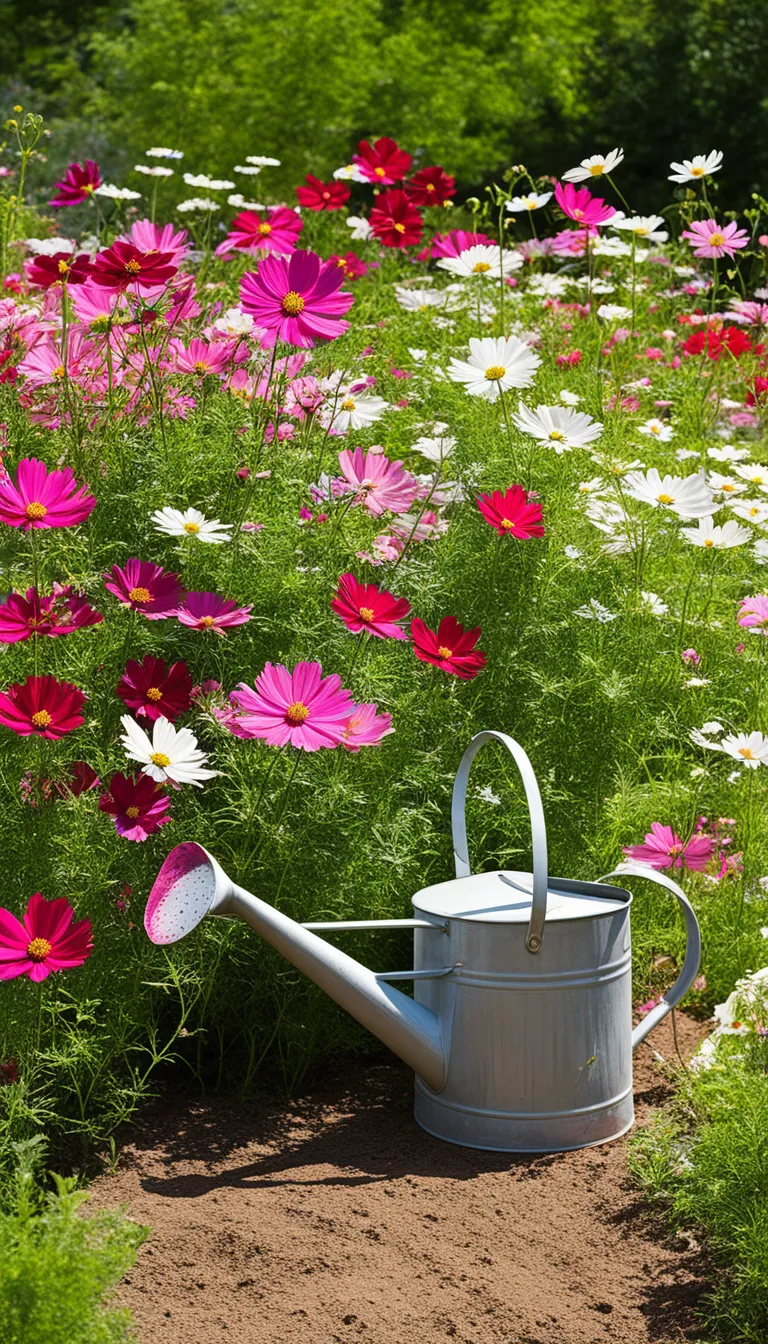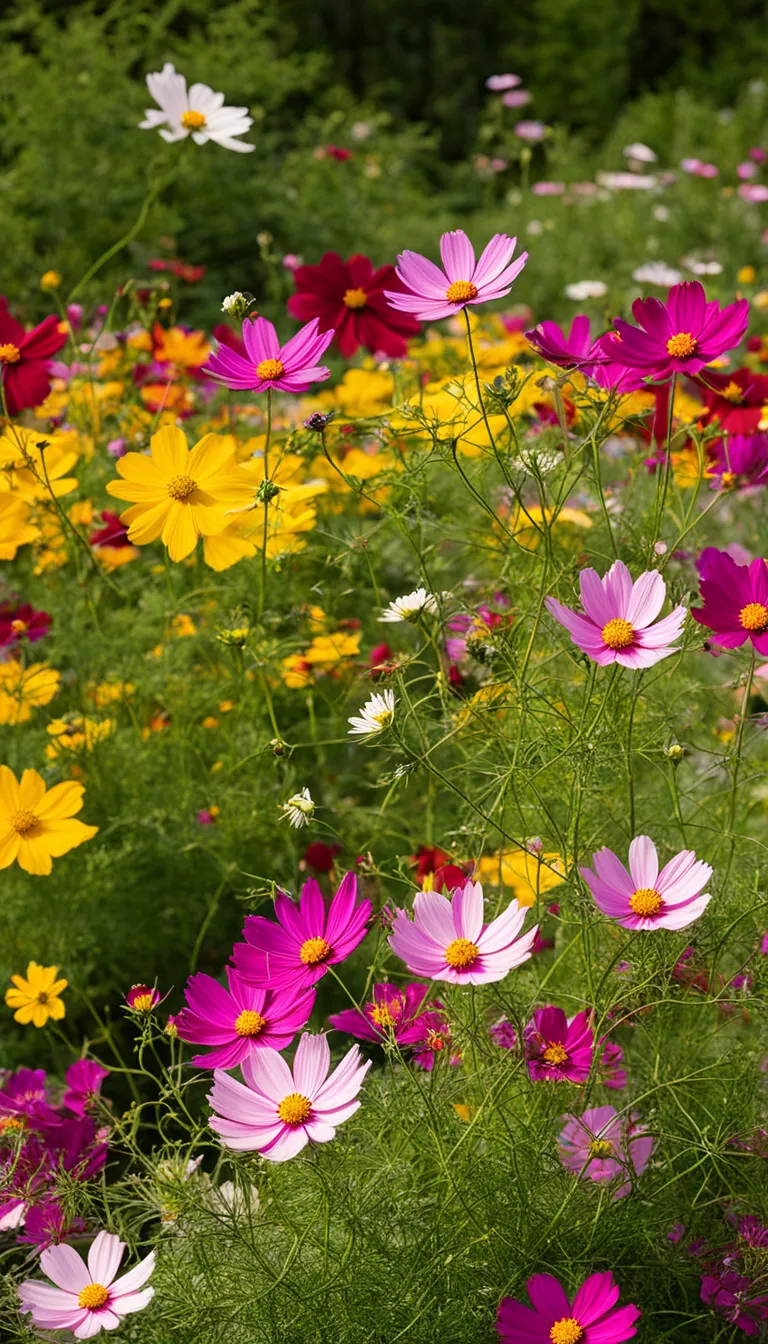Discover the beauty and simplicity of cosmos flowers, a charming addition to any garden with their vibrant colors and easy-care nature. Bursting onto the scene like a firework display, these annual blooms are the surprise your garden has been waiting for. But how do you ensure that the explosion of color is a sight to behold season after season? Let’s dive in and unearth the secrets to cultivating a cosmos spectacle that will be the envy of your neighborhood!
Ever wondered what makes the cosmos flower a garden favorite? Originating from the meadows of Mexico, these starry-eyed beauties have journeyed far and wide to grace our gardens. They are not just a treat for the eyes but also a haven for pollinators. With their open petals and feathery foliage, cosmos are the perfect candidates for adding a splash of color to your green space. But wait, there’s more! Their low-maintenance charm makes them a hit with gardening greenhorns and wizards alike. Who wouldn’t want a flower that practically takes care of itself?
Think of cosmos care as the art of mastering the garden basics. Sunlight? They love it! Watering? Keep it moderate. Soil? Well-drained and they’re happy. It’s like they were designed for the laid-back gardener. Here’s a quick checklist to keep your cosmos thriving:
- Full sun – At least 6 hours of direct sunlight a day.
- Regular watering – Especially important during dry spells.
- Well-draining soil – They despise wet feet!
- Occasional fertilizer – A little goes a long way.
- Deadheading – Remove spent blooms to encourage more.
From the dainty ‘Sonata’ to the statuesque ‘Sensation’ series, cosmos varieties are like the characters of a thrilling novel, each with their own story to tell. Do you prefer the frilly petals of ‘Double Click’ or the striking hues of ‘Rubenza’? Perhaps the white purity of ‘Purity’ or the sunny delight of ‘Bright Lights’? Choosing the right cosmos for your garden is like picking the perfect outfit for a surprise party – you want to make a statement! Here’s a table to help you decide:
| Variety | Color | Height |
|---|---|---|
| Sonata | Pink, White, Red | 20 inches |
| Sensation | Mixed Colors | Up to 6 feet |
| Double Click | Bicolors | 24-36 inches |
| Rubenza | Deep Ruby Red | 24-28 inches |
| Purity | Pure White | 3-4 feet |
| Bright Lights | Orange, Yellow | 2-3 feet |

What is Cosmos?
Cosmos are the jewels of the garden, capturing the essence of summery elegance with their daisy-like flowers that dance atop slender stems. Originating from the meadows of Mexico, these annuals have charmed their way into the hearts of gardeners around the world. Their popularity is no surprise; cosmos are incredibly easy to grow and can thrive in a variety of climates, making them perfect for both beginners and experienced green thumbs alike.
But what really sets cosmos apart? It’s their explosive color range—from whites and pinks to deep burgundy—and their ability to attract pollinators such as bees and butterflies. Their feathery foliage adds a touch of whimsy, creating a backdrop that allows their star-shaped blooms to truly shine. Moreover, cosmos are known for their surprising resilience, often blooming in conditions where other flowers might falter.
Here’s a quick glance at some key cosmos facts:
- Family: Asteraceae
- Plant Type: Annual
- Blooming Season: Late spring until frost
- Height: Ranges from 1 to 6 feet
- Sunlight: Full sun
- Soil: Well-drained, not too fertile
Whether you’re looking to add a splash of color to your garden or seeking a low-maintenance beauty that keeps on giving, cosmos are a choice that will reward you with a burst of beauty and a season-long display of floral fireworks. So, are you ready to be captivated by cosmos?

How to Care for Cosmos?
Ever wondered how to keep your cosmos blooming with the vibrancy of a firework display? Fear not, for these flowers are as low-maintenance as they are stunning. Here’s your guide to ensuring your cosmos flowers are the talk of the neighborhood!
Let There Be Light: Cosmos flowers are sun-worshippers! Plant them in a spot where they can bask in full sunlight for at least 6-8 hours a day. This is non-negotiable – without enough sun, their blooms might be as lackluster as a forgotten sparkler.
Watering Wonders: While cosmos are drought-tolerant, they do enjoy a regular drink. Water them evenly to keep the soil moist, but not waterlogged. Think of it as quenching their thirst without causing a flood!
Soil and Fertilization: Cosmos aren’t picky eaters, but they do prefer well-draining soil. A little compost can go a long way, but avoid over-fertilizing; too much and you’ll have lots of leaves with few blooms. It’s like having all the bang but no burst!
Deadheading: Keep your cosmos looking sharp by removing spent flowers. This encourages new growth and extends the blooming period, making sure the show goes on!
- Full sunlight exposure (6-8 hours daily)
- Even watering (keep soil moist but not soggy)
- Well-draining soil with occasional compost
- Avoid over-fertilization (promotes foliage over flowers)
- Deadheading (remove spent flowers to encourage blooming)
Follow these simple steps, and your cosmos will thrive, offering a burst of color and life to your garden. They’re the perfect way to add a touch of explosive beauty without the need for a green thumb. So, why not plant some cosmos and watch your garden’s popularity explode?

What are the Cosmos Varieties?
Ever wondered why cosmos flowers are so adored? It’s not just their ease of care; it’s the astonishing variety that truly captivates! Each type of cosmos bursts with its own unique personality, ready to make a statement in your garden. Let’s dive into the world of cosmos and discover the types that could be painting your outdoor canvas.
First up, the Cosmos bipinnatus, often hailed as the ‘Garden Cosmos’. This popular variety is known for its large, daisy-like flowers with a riot of colors from white and pink to deep burgundy. Then we have the Cosmos sulphureus, or ‘Sulphur Cosmos’, which explodes with fiery hues of yellow, orange, and red, resembling a sunset in bloom.
But wait, there’s more! Check out this list of some other cosmos varieties that might just tickle your fancy:
- Chocolate Cosmos (Cosmos atrosanguineus): Yes, it’s real! This variety not only looks divine with its dark velvety petals but also emits a delicious chocolate scent. Imagine that sweet surprise in your garden!
- Seashells Cosmos: The tubular petals of this cosmos give it a distinctive seashell-like appearance, adding a twist of the ocean to your flower beds.
- Daydream Cosmos: For those who love pastels, the Daydream variety offers a soft, dreamy blend of pink and white that truly lives up to its name.
Choosing the right cosmos for your garden can be as exciting as watching them bloom. Consider the height, color, and form that will complement your existing garden design. Whether you’re crafting a monochrome elegance or a burst of color, there’s a cosmos variety waiting to join the party.





